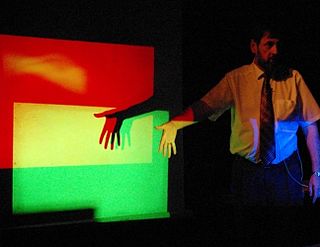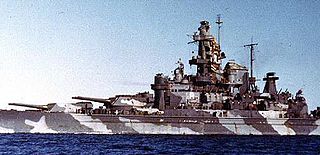
Acrylic paint is a fast-drying paint made of pigment suspended in acrylic polymer emulsion and plasticizers, silicone oils, defoamers, stabilizers, or metal soaps. Most acrylic paints are water-based, but become water-resistant when dry. Depending on how much the paint is diluted with water, or modified with acrylic gels, mediums, or pastes, the finished acrylic painting can resemble a watercolor, a gouache, or an oil painting, or have its own unique characteristics not attainable with other media.

Oil painting is the process of painting with pigments with a medium of drying oil as the binder. It has been the most common technique for artistic painting on wood panel or canvas for several centuries, spreading from Europe to the rest of the world. The advantages of oil for painting images include "greater flexibility, richer and denser colour, and a wider range from light to dark". But the process is slower, especially when one layer of paint needs to be allowed to dry before another is applied.

Paint is any pigmented liquid, liquefiable, or solid mastic composition that, after application to a substrate in a thin layer, converts to a solid film. It is most commonly used to protect, color, or provide texture to objects. Paint can be made or purchased in many colors—and in many different types, such as watercolor or synthetic. Paint is typically stored, sold, and applied as a liquid, but most types dry into a solid. Most paints are either oil-based or water-based and each has distinct characteristics. For one, it is illegal in most municipalities to discard oil-based paint down household drains or sewers. Clean-up solvents are also different for water-based paint than they are for oil-based paint. Water-based paints and oil-based paints will cure differently based on the outside ambient temperature of the object being painted Usually, the object being painted must be over 10 °C (50 °F), although some manufacturers of external paints/primers claim they can be applied when temperatures are as low as 2 °C (35 °F).
Sienna is an earth pigment containing iron oxide and manganese oxide. In its natural state, it is yellowish brown and is called raw sienna. When heated, it becomes a reddish brown and is called burnt sienna. It takes its name from the city-state of Siena, where it was produced during the Renaissance. Along with ochre and umber, it was one of the first pigments to be used by humans, and is found in many cave paintings. Since the Renaissance, it has been one of the brown pigments most widely used by artists.

Gouache, body color, or opaque watercolor, is a water-medium paint consisting of natural pigment, water, a binding agent, and sometimes additional inert material. Gouache is designed to be opaque. Gouache has a considerable history, having been used for at least twelve centuries. It is used most consistently by commercial artists for posters, illustrations, comics, and other design work.
In the visual arts, color theory is a body of practical guidance to color mixing and the visual effects of a specific color combination. Color terminology based on the color wheel and its geometry separates colors into primary color, secondary color, and tertiary color. Understanding color theory dates to antiquity. Aristotle and Claudius Ptolemy already discussed which and how colors can be produced by mixing other colors. The influence of light on color was investigated and revealed further by al-Kindi and Ibn al-Haytham (d.1039). Ibn Sina, Nasir al-Din al-Tusi and Robert Grosseteste discovered that contrary to the teachings of Aristotle, there are multiple color paths to get from black to white. More modern approaches to color theory principles can be found in the writings of Leone Battista Alberti and the notebooks of Leonardo da Vinci. A formalization of "color theory" began in the 18th century, initially within a partisan controversy over Isaac Newton's theory of color and the nature of primary colors. From there it developed as an independent artistic tradition with only superficial reference to colorimetry and vision science.

The American Paint Horse is a breed of horse that combines both the conformational characteristics of a western stock horse with a pinto spotting pattern of white and dark coat colors. Developed from a base of spotted horses with Quarter Horse and Thoroughbred bloodlines, the American Paint Horse Association (APHA) breed registry is now one of the largest in North America. The registry allows some non-spotted animals to be registered as "Solid Paint Bred" and considers the American Paint Horse to be a horse breed with distinct characteristics, not merely a color breed.

Teal is a cyan-green color. Its name comes from that of a bird — the Eurasian teal — which presents a similarly colored stripe on its head. The word is often used colloquially to refer to shades of cyan in general.

Luminous paint or luminescent paint is paint that exhibits luminescence. In other words, it gives off visible light through fluorescence, phosphorescence, or radioluminescence. There are three types of luminous paints: fluorescent paint, phosphorescent paint and radioluminescent paint.
Silicate mineral paints or mineral colors are paint coats with mineral binding agents. Two relevant mineral binders play a role in the field of colors: Lime and silicate.
Historic paint analysis, or, architectural paint research, is the scientific analysis of architectural finishes, including not only paints but also metallic finishes and clear and translucent finishes used on historic buildings. The primary purpose of such analysis is to determine the color of the finish used at a particular time in the building's history, usually the original construction, but not always. Secondary purposes include determination of ingredients such as media and pigments. Paint analysis can also be used as a dating technique for various building elements.
Buon fresco is a fresco painting technique in which alkaline-resistant pigments, ground in water, are applied to wet plaster.

There are two types of color mixing: additive and subtractive. In both cases, mixing is typically described in terms of three color and three secondary colors. All subtractive colors combined in equal amounts make dark brown, while all additive colors combined in equal amounts make white.

Fresco is a 2010 designer board game by Marco Ruskowski and Marcel Süßelbeck. It was nominated for the 2010 Spiel des Jahres award and won the 2010 Deutscher Spiele Preis. Each player in Fresco takes the role of master painter attempting to restore the fresco on a cathedral ceiling, earning points for each section they repair. Players must manage a team of apprentices who will buy or mix the required paints, paint portraits to earn money, and keep the bishop happy. Overworked apprentices may leave the painter's service, reducing the actions the player can take. A player can improve morale, and even gain extra actions, by letting his workers sleep late. However, this can allow earlier players to block his ability to buy necessary paints or to restore a section of the fresco before he can get to it.

The Santa Trinita Maestà is a panel painting by the Italian medieval artist Cimabue, dating to c. 1290–1300. Originally painted for the church of Santa Trinita, Florence, where it remained until 1471, it is now housed in the Uffizi Gallery of Florence, Italy. It represents the Madonna enthroned with the Baby Jesus and surrounded by eight angels and, below, four half portraits of prophets.

Variations of gray or grey include achromatic grayscale shades, which lie exactly between white and black, and nearby colors with low colorfulness. A selection of a number of these various colors is shown below.

Shades of black are colors that differ only slightly from pure black. These colors have a low lightness. From a photometric point of view, a color which differs slightly from black always has low relative luminance. Variations of black include what are commonly termed off-black colors, which may be considered part of a neutral color scheme, usually in interior design as a part of a background for brighter colors. Black and dark gray colors are powerful accent colors that suggest weight, dignity, formality, and solemnity.

In 1935, the United States Navy Naval Research Laboratory began studies and tests on low visibility ship camouflage. Research continued through World War II to (1) reduce visibility by painting vertical surfaces to harmonize with the horizon and horizontal surfaces to blend with the sea, or (2) confuse identity and course by painting obtrusive patterns on vertical surfaces. Some camouflage methods served both purposes. American captains were permitted less freedom of interpretation with these schemes than their British Commonwealth counterparts applied to Admiralty camouflage schemes.

The conservation and restoration of paintings is carried out by professional painting conservators. Paintings cover a wide range of various mediums, materials, and their supports. Painting types include fine art to decorative and functional objects spanning from acrylics, frescoes, and oil paint on various surfaces, egg tempera on panels and canvas, lacquer painting, water color and more. Knowing the materials of any given painting and its support allows for the proper restoration and conservation practices. All components of a painting will react to its environment differently, and impact the artwork as a whole. These material components along with collections care will determine the longevity of a painting. The first steps to conservation and restoration is preventive conservation followed by active restoration with the artist's intent in mind.

Kandyan era frescoes are mural paintings created during the Kingdom of Kandy (1469–1815) in Sri Lanka, a time when kings gave a special place to arts and literature.














